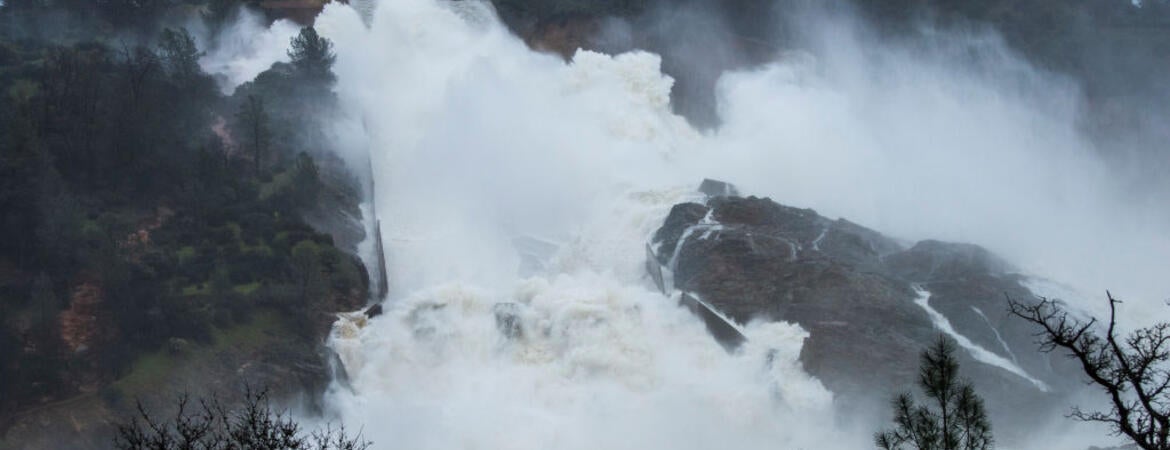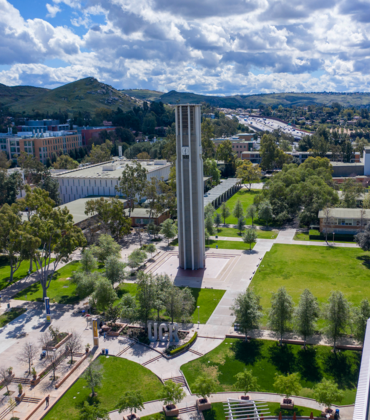
Research from UCLA and other sources recently predicted another “big one” to hit the West Coast. This time, it’s not an earthquake, but a “megastorm.”
Such a flood typically hits California every 100 to 200 years, but the dynamics and frequency of this storm will be exacerbated by climate change. That is, warmer temperatures mean much of the precipitation will fall as rain, and not snow.
The megastorm will be the product of an "atmospheric river." These are long rivers in the sky that move water from the tropics, eventually making landfall as rain and snow. When this atmospheric river superstorm will occur is uncertain – there is now a 1 in 50 chance of the event every year.
It will mean weeks of rain and snow. The hills around Los Angeles could get 2 inches of rain an hour. In a month, an average of 16 inches of precipitation will have fallen across the state, with some mountainous areas getting up to 100 inches of snow. In addition to flooding, the rainfall would mean devastating landslides and debris flows. The economic fallout could be $725 billion – three times the damage from a severe San Andreas Fault earthquake.
We asked Kurt Schwabe, the associate dean of the School of Public Policy and professor of environmental economics and policy, to assess the recent megastorm predictions.
Q: Why the alarms now? Why might this storm be worse than other storms in recent California history, including in 1969, 1986, and 1997?
A: First off, it’s important to emphasize that this paper does not impact our current drought situation at all in terms of the short-term responses and responsibilities. We are experiencing the worst drought event in over 12 — yes, 12 — centuries and we need to stay focused on working together on how best to deal with it. Second, as I’ll mention briefly below, it does actually provide further justification for significant and continued investments in updating our water infrastructure, which has been overlooked for too long.
Now, regarding the results of the paper. The main drivers that give rise to the megaflood that the authors identify are not something we haven’t already anticipated under the rapidly changing climate. That is, some of the main factors the authors identify are consistent with what our models generally have been predicting (and our experiences supporting) for some time. The factors include (i) an increase in the severity and intensity of drought and precipitation, more so in the future (although not necessarily an increase in overall precipitation), (ii) a greater fraction of precipitation falling as rain than snow relative to the past, and (iii) increases in temperature and aridity, with a consequent effect that the snow that falls in the winter time will be quicker to melt and runoff.
A fourth (iv) element that paper accounts for that is also not something foreign to our understanding is that our current natural and manmade landscape may not be built to manage the types of intense runoff and flooding events we might experience in the future, especially with the loss of forests in our watersheds due to fire and, to some extent, development. Because of these latter two factors, our forests and landscapes are much less able to capture, absorb, and retain much of the precipitation and runoff relative to the past. Consequently, the combination of these factors will lead to more runoff generated over a shorter period and, when coupled with the changed landscape, will lead to larger flooding events.
What is really unique and informative about the paper is what we glean when they marry these elements – changes in climate with changes in landscapes – and investigate the impacts at a much more granular (geographic) level. And, importantly, the paper both asks and answers the question of, “what would happen if we have two-large scale “atmospheric river” events back-to-back. Their conclusion: a megaflood.
Q: Would the damage from such a flood be akin to the great flood of 1862, in which it rained constantly for 40 days, creating a 300-mile-long, up-to-60-mile-wide sea, and killing 4,000 people?
I would caution against comparisons with the flooding events in the 1800s given that much of California, e.g., southern California, has been built to capture, redirect, and convey storm runoff out of harms way.
But the infrastructure that we have was built decades and - in some cases - nearly a century ago, and thus is outdated relative to what California needs to deal with today’s and tomorrow's climate realities. This, combined with the loss of forests, does create a vulnerability, more so under climate change since we haven’t “plumbed” our system to deal with such large-scale events, and certainly not such back-to-back large-scale intense events — which is what the authors consider.
Q: The governor recently announced an $8 billion water infrastructure plan. It’s aimed toward recycling, desalinating, and conserving water. Will it help address climate-change-related weather events such as a megastorm? Should California be in crisis mode over this prospect?
The governor’s recent messaging about new programs and investments into water infrastructure and climate resilience was a step in the right direction ... although not a big enough step.
I think (the researchers) are clear that these are low-probability events. But just as is the case that it’s a statistical certainty that at some point someone who continues to flip a fair coin 100 times will flip 100 consecutive heads, it's a statistical certainty that at some point we'll get back-to-back atmospheric river events. With climate change, the frequency in which such an event will happen has likely increased. So, I think the authors’ results are extremely useful in terms of how we think about investments and planning for an increasingly volatile future.
That said, my focus right now - as I think Californian's focus should be - is on the current drought and working collaboratively and creatively to implement short-term and long-term solutions that minimize impacts. The results of the current study shouldn’t make any of us feel better about the situation we confront regarding the current drought nor give us any reason to think we don’t need to invest significantly in our water infrastructure and reconsider how water is allocated and managed in California. Actually, I think the results lend further support to the types of investments and changes outlined in the Governor’s recent plan, although I would say such plans are long overdue and likely not enough still. But, it’s a good start and I commend the Governor for listening to the science and the community.
Q: Are California’s dams and levees equipped to handle rainfall on this scale? What must California do to deflect the megastorm’s harshest effects?
This is an easy one – no, our dams and levees aren’t equipped to handle rainfall on the scale considered in the paper. There are a number of actions. One is further investments to increase storage, particularly through the use of our vast aquifer capacity but also through opportunistic surface storage development and upgrades. A second is an increase in strategic conveyance structures to move the runoff and floods to such storage sites (especially to aquifers). A third action would be investments in headwaters and watershed landscape management, especially in response to the loss of forests from fires. These are just three of many possible actions.
Lead photo: The Oroville Dam in Oroville, California. Photo by Brian Baer/ California Department of Water Resources via Getty Images



